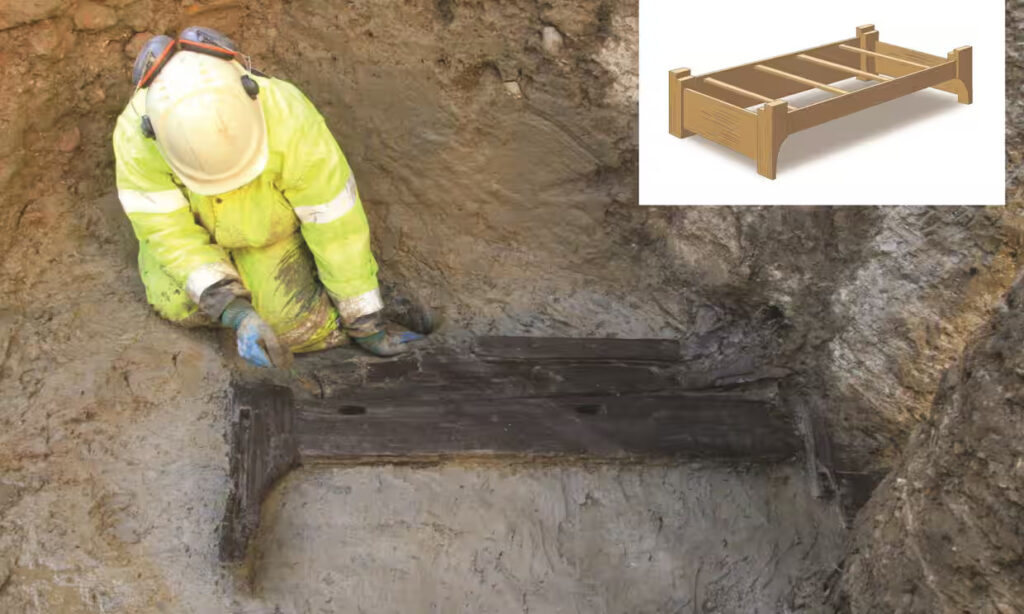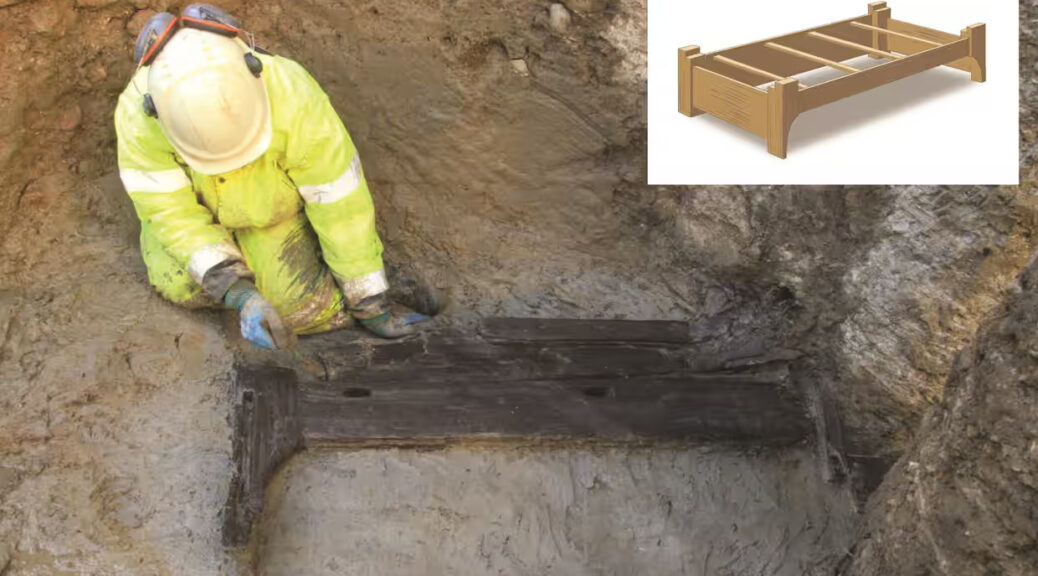Roman Wooden Bed Unearthed in London

Archaeologists in London have made the “exceptionally important” discovery of a complete wooden funerary bed, the first ever discovered in Britain.
The remarkably preserved bed, described as “unparalleled” by experts, was excavated from the site of a former Roman cemetery near Holborn viaduct, central London, alongside five oak coffins. Prior to this dig, only three Roman timber coffins in total have been found in the capital.
Wooden remains from the Roman era in Britain (AD43-410) rarely survive to the present day but, because the waterlogged burial site adjoins the now underground river Fleet, its graves were well preserved.
The funerary bed is made from high-quality oak and has carved feet and joints fixed with small wooden pegs. It was dismantled before being laid within the grave of an adult male in his late 20s or early 30s.

“It’s been quite carefully taken apart and stashed, almost like flat-packed furniture for the next life,” said Michael Marshall, an artefacts specialist with archaeologists Mola (Museum of London Archaeology) – although he stressed there was much about the burials that is yet to be studied. Excavations at the site continue.
Part of the site, outside the walls of the Roman city and 6 metres below the modern ground level, had been excavated in the 1990s. However, “the bed was a complete surprise, because we’ve never seen anything like it before”, said Marshall.
While there are accounts of people being carried on beds in funeral processions, and sometimes depictions of them on tombstones, he said: “We didn’t know that people were buried in these kinds of Roman burials beds at all. That’s something that there is no previous evidence for from Britain.”

No other grave goods were found with the bed burial, but it was almost certainly a high-status person, said Marshall. “It’s an incredibly well-made piece of furniture.
This is a piece of proper joinery, as opposed to something has been sort of banged together. It’s one of the fancier pieces of furniture that’s ever been recovered from Roman Britain.”

Personal objects were recovered from elsewhere in the cemetery, however, including beads, a glass vial apparently still containing residue, and a decorated lamp, thought to date to the very earliest period of Roman occupation between AD43 and 80.
Strikingly, it is decorated with the design of a defeated gladiator, “which is kind of a wonderful thing”, said Marshall. Similar images have previously been found in funeral contexts in London and Colchester.
“There’s something about the symbolism of the fallen gladiator that makes sense in a funerary context. A defeated gladiator is somebody who is dying, obviously – but they also fight against death.
“So there’s evidence that some really quite subtle choices about how people mourned their dead are starting to come through from analysing these burials.”
